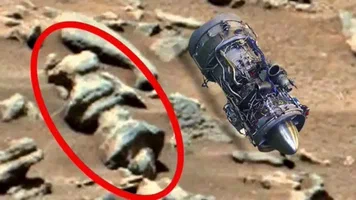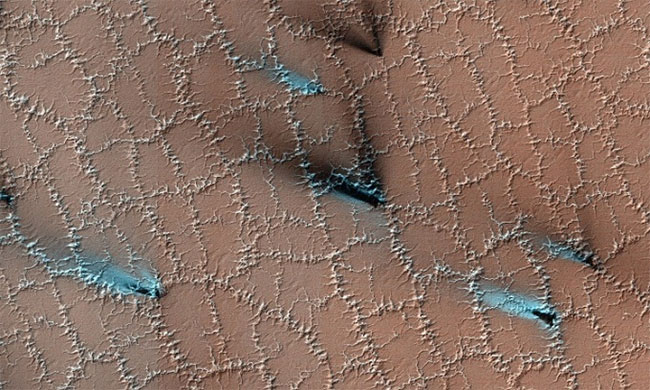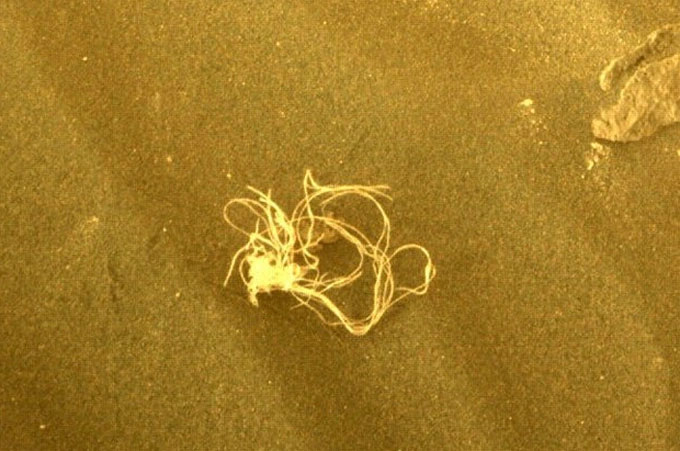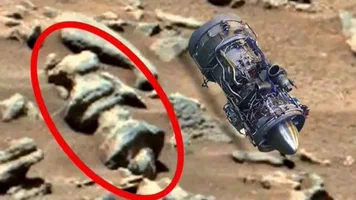Mars, the red planet located near Earth, has always been a source of inspiration and challenge for scientists and space explorers. Over the past decades, space missions have continuously explored and sent back amazing images from the surface of Mars, helping humans better understand this planet. Those images not only reveal the strange beauty of Mars but also open up many mysteries that need to be solved.

Mars Exploration Journey
Since the 1960s, space missions have begun to head to Mars. But it was not until advanced probes such as Curiosity, Perseverance and the Mars Reconnaissance Orbiter satellites sent back thousands of detailed images that we could really see the surface of this planet clearly. Images from the probes are not only photos of the terrain of Mars, but also provide information about the geological structure, climate and the possibility of life once existing here.

Strange and Beautiful Terrains
One of the things that makes images of Mars so special is the diversity of its terrain. From vast sand dunes to giant craters, from deep canyons like Valles Marineris – ten times longer than Earth’s Grand Canyon – to towering mountains like Olympus Mons, the tallest mountain in the Solar System, all create a majestic and mysterious beauty.

These images show that Mars is not the dry and monotonous planet we once thought. The probes have recorded traces of water flowing across it, along with rocks that may have been formed by the effects of wind and water in the distant past. This raises the possibility that Mars may have had conditions that could have supported life millions of years ago.
Searching for Signs of Life
One of the most important goals of Mars exploration missions is to search for evidence of life. Images from the Red Planet have revealed traces of ancient river systems, dried-up lakes, and mineral-rich soil samples, all of which suggest that liquid water once existed on Mars. With water being an important element for life, scientists are continuing to dig deeper to find out if ancient microorganisms once existed on Mars.
Images from the Perseverance mission also revealed some rock structures that may contain organic compounds, raising hopes of finding traces of past microbial life. These findings are leading scientists to focus on key areas like Jezero Lake for further analysis of rock samples.
Future Mars: Human Habitability
Detailed images from the surface of Mars not only reveal the past but also open up potential for the future. With the advancement of technology, humans are moving towards settling on Mars. Images of the surface of the red planet have provided important data to assess the possibility of building a base for future astronauts. Learning about the environment and terrain on Mars also helps scientists develop survival technology suitable for the harsh conditions of this planet.
In addition, images of ice at the two poles of Mars show the potential for exploiting water resources, an essential element for human survival on this distant planet.
These amazing images from Mars have given us a new look at the red planet, from majestic mountain ranges, vast craters to traces of ancient water flows. Each photo is a piece in the puzzle of this planet, helping humans gradually reveal the mysteries about the history and possibility of life on Mars.
In the future, with the next missions, we will get closer to completely deciphering the mystery of the red planet and maybe one day, humans will set foot on the surface of Mars, turning the images we see today into reality.

